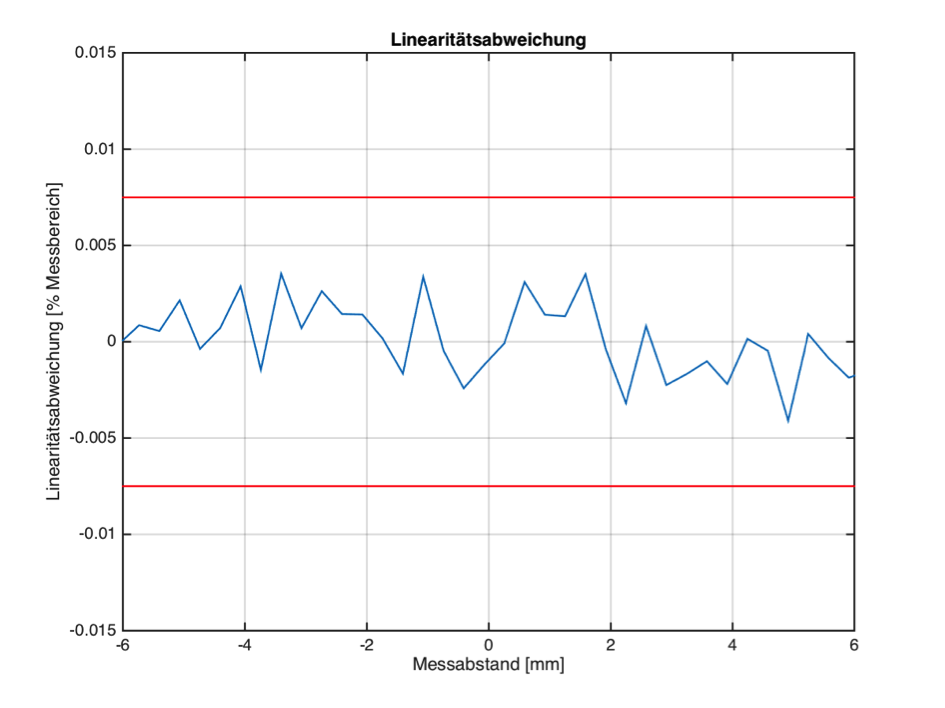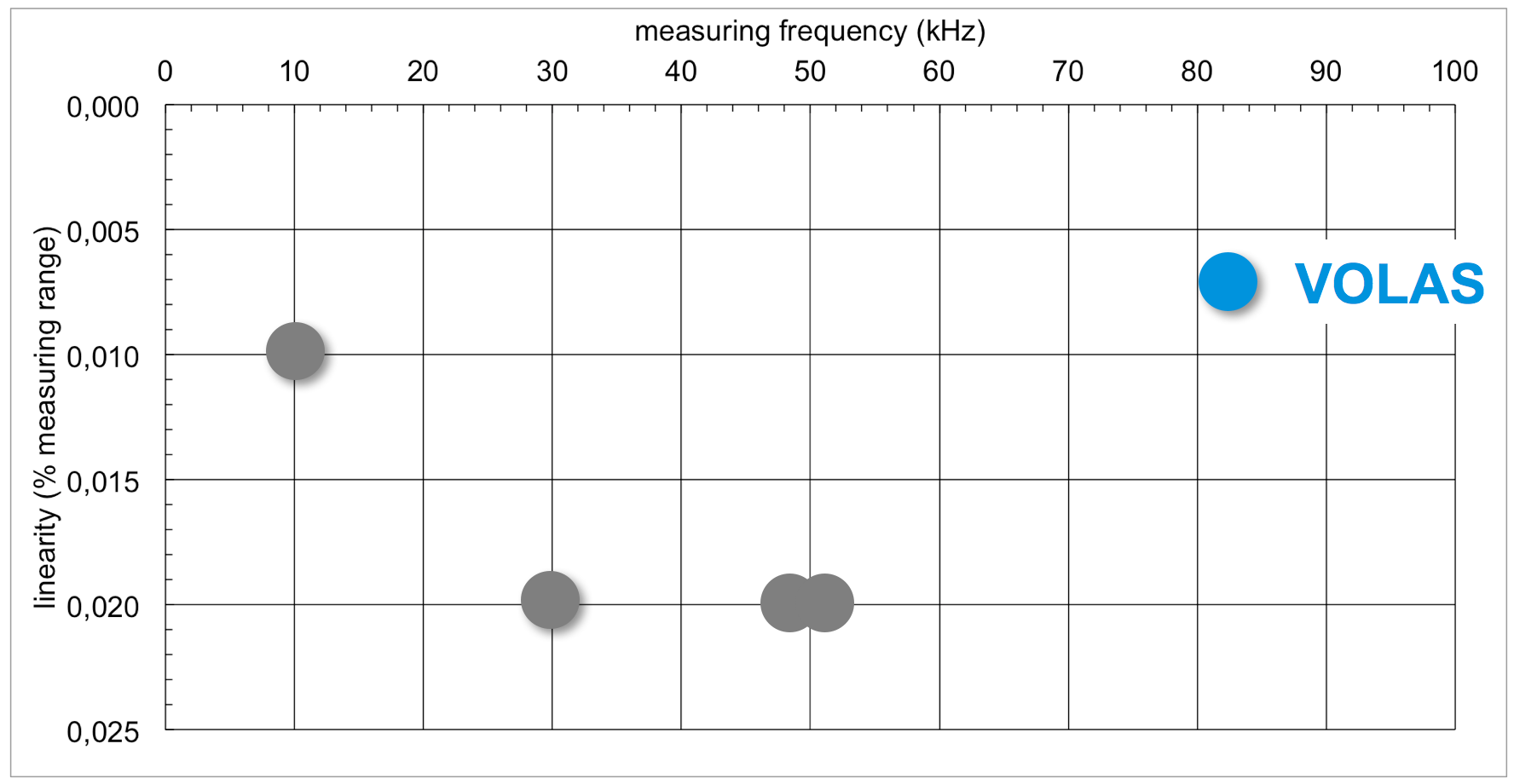

Grey dots: Systems of other manufacturers.
A degree for accuracy of triangulation sensors is the "linearity". Meanwhile, all manufacturers provide corresponding details for their products.
Determining the linearity is the task of the individual manufacturers. Each manufacturer has its own method which will not be detailed. DIN 32877 attempted to standardize the methods accordingly. This approach has been successful. More and more manufacturers refer in their documents to this standard without making any reference to the details stated in this standard.
Usually the calibration is carried out on an ideal scattering matt surface. This will be perfect and provides the best results.
However this has nothing to do with the practical application of a triangulation sensor at a later time. Therefore these results are normally not applicable to practice.
A further aspect is: the calibration on a perfect scattering surface would lead to the fact that the sensor gets on with very low power. The parameters which have been set this way have little to do with any subsequent application as for example the measurement of a surface.
VOLAS calibrates its sensors on a glossy metallic surface with a defined lower degree of roughness. The roughness is within the range of typical applications in practice as for example microfinish techniques like grinding or milling applications.
As a result, VOLAS achieves with its distance sensors a better linearity.
The illustration shows the linearity error applied across the measuring range. The sensor in this example has a measuring range of ± 6 mm thus totalled 12 mm. The linearity error does not exceed the specified value of 0.0075% of the measuring range at any point. This value corresponds converted to an error of 0.9 µm.